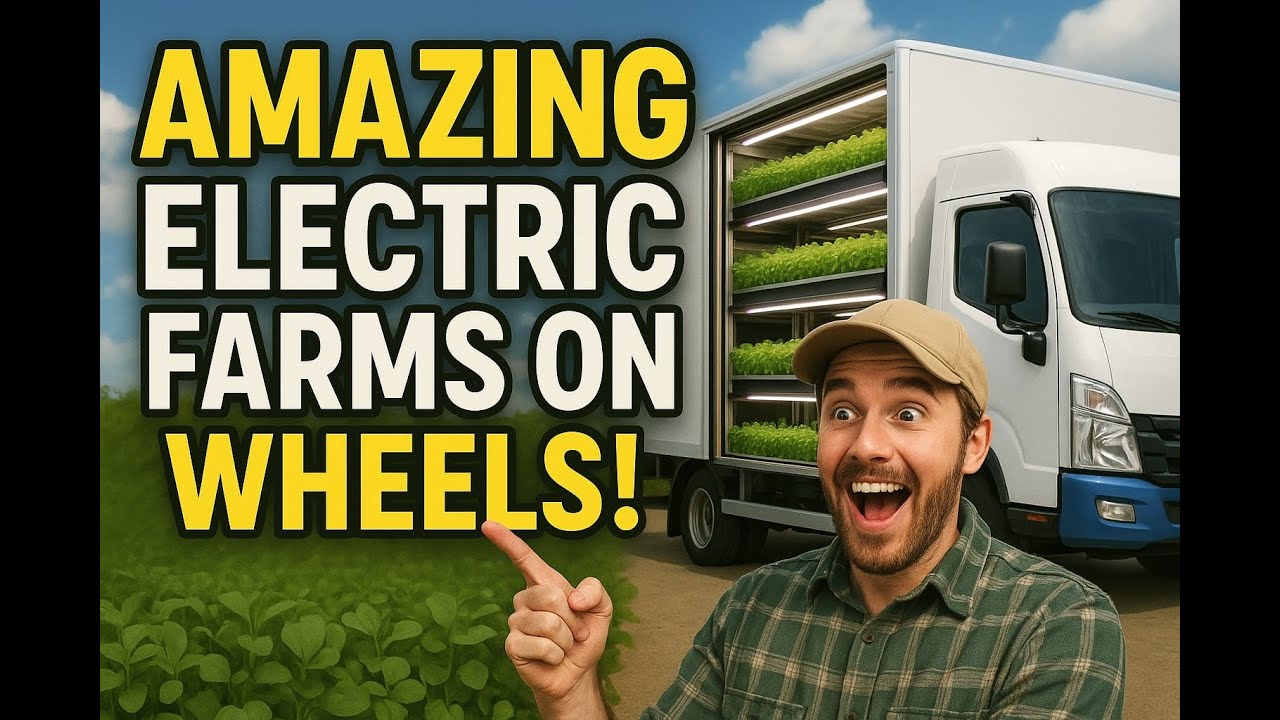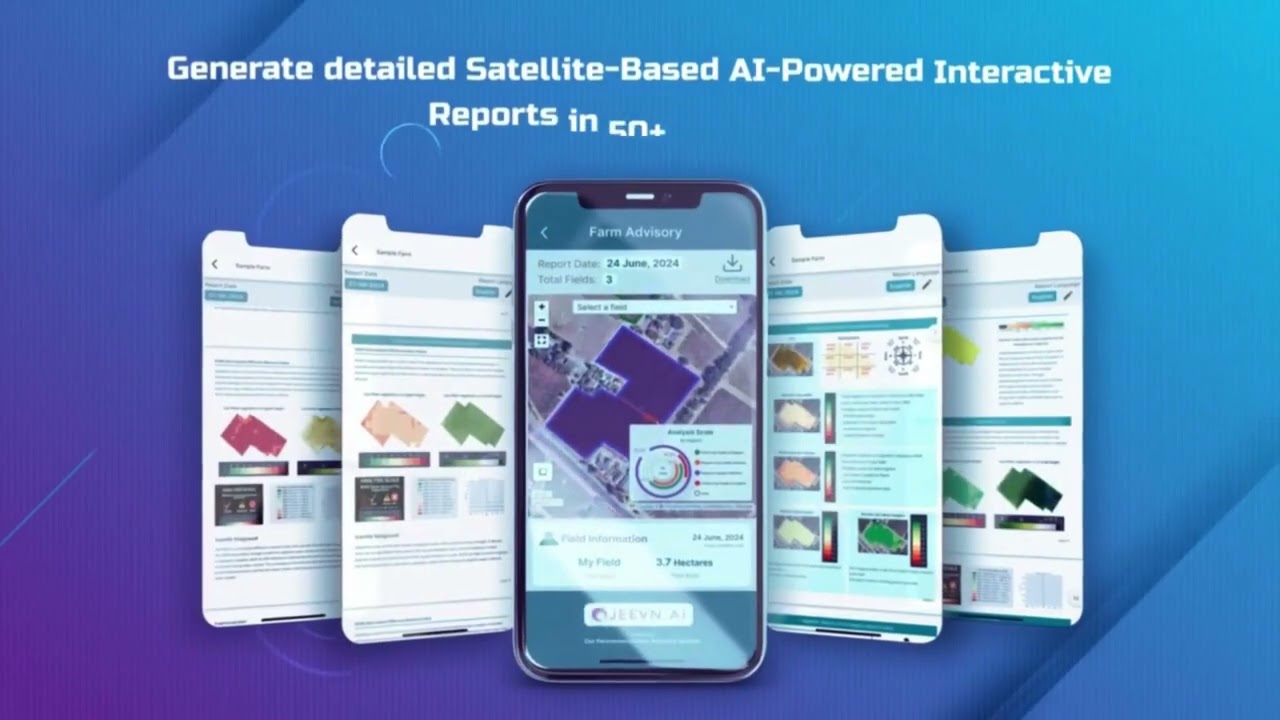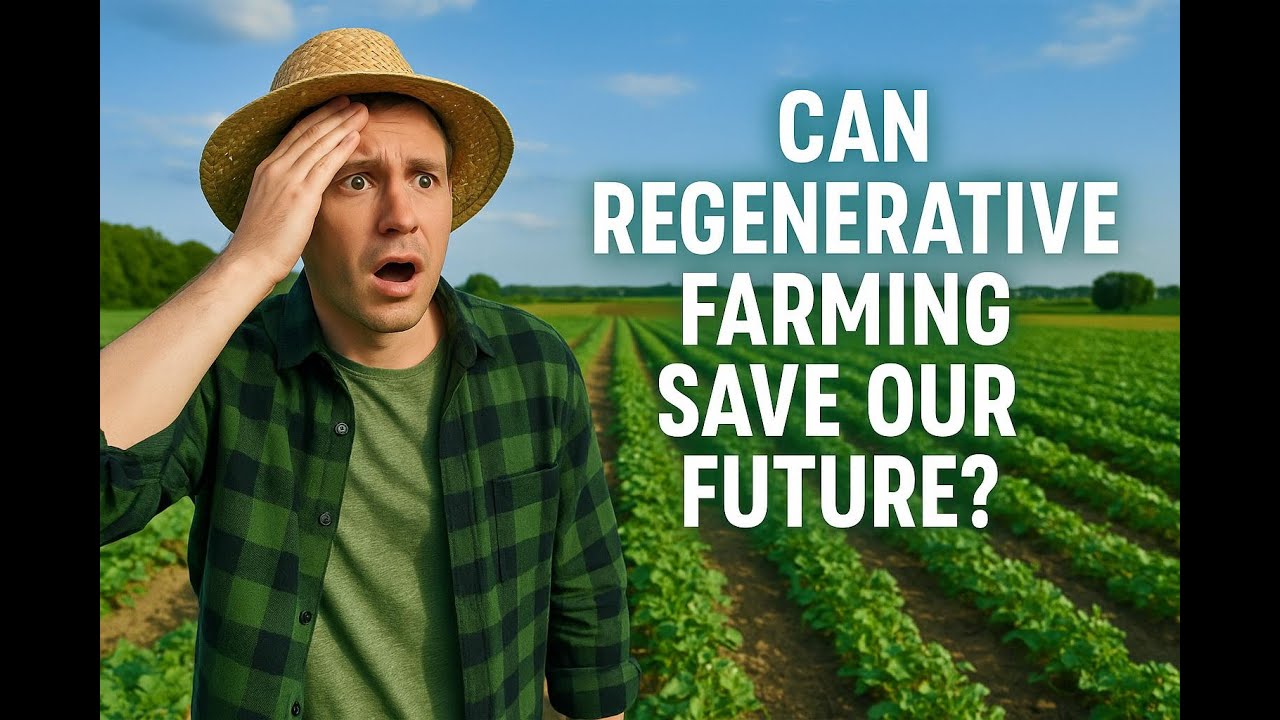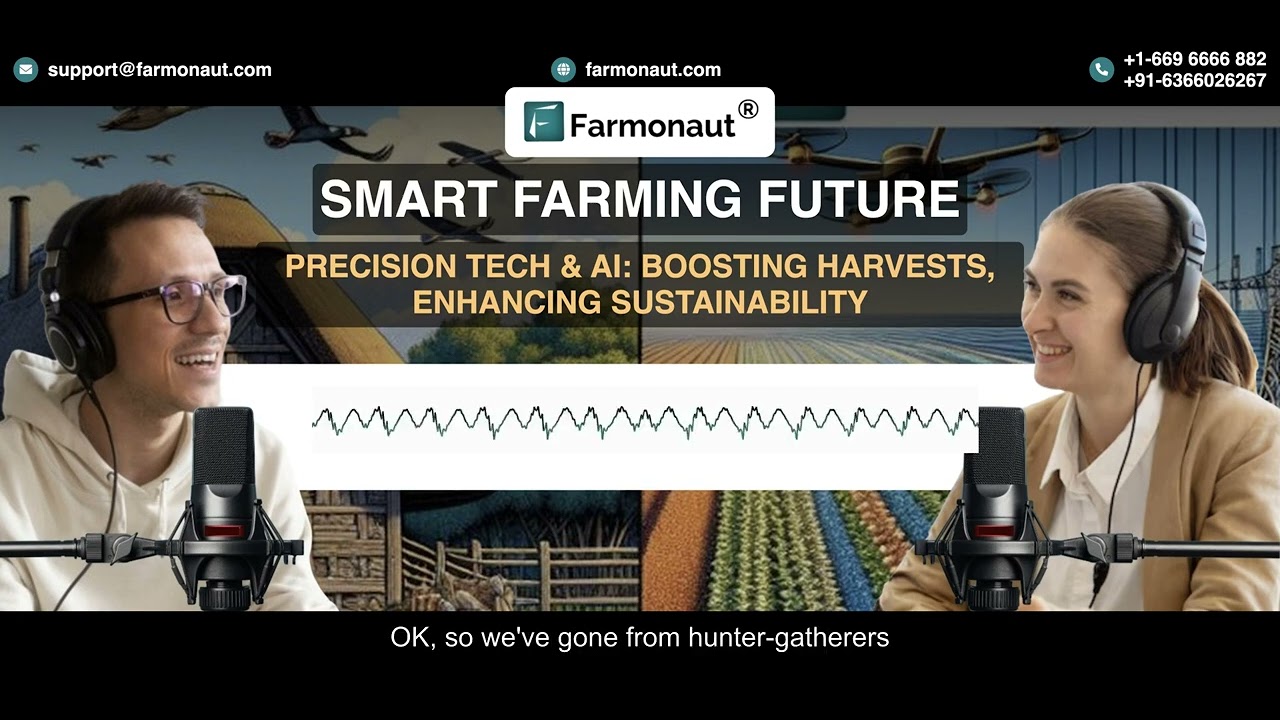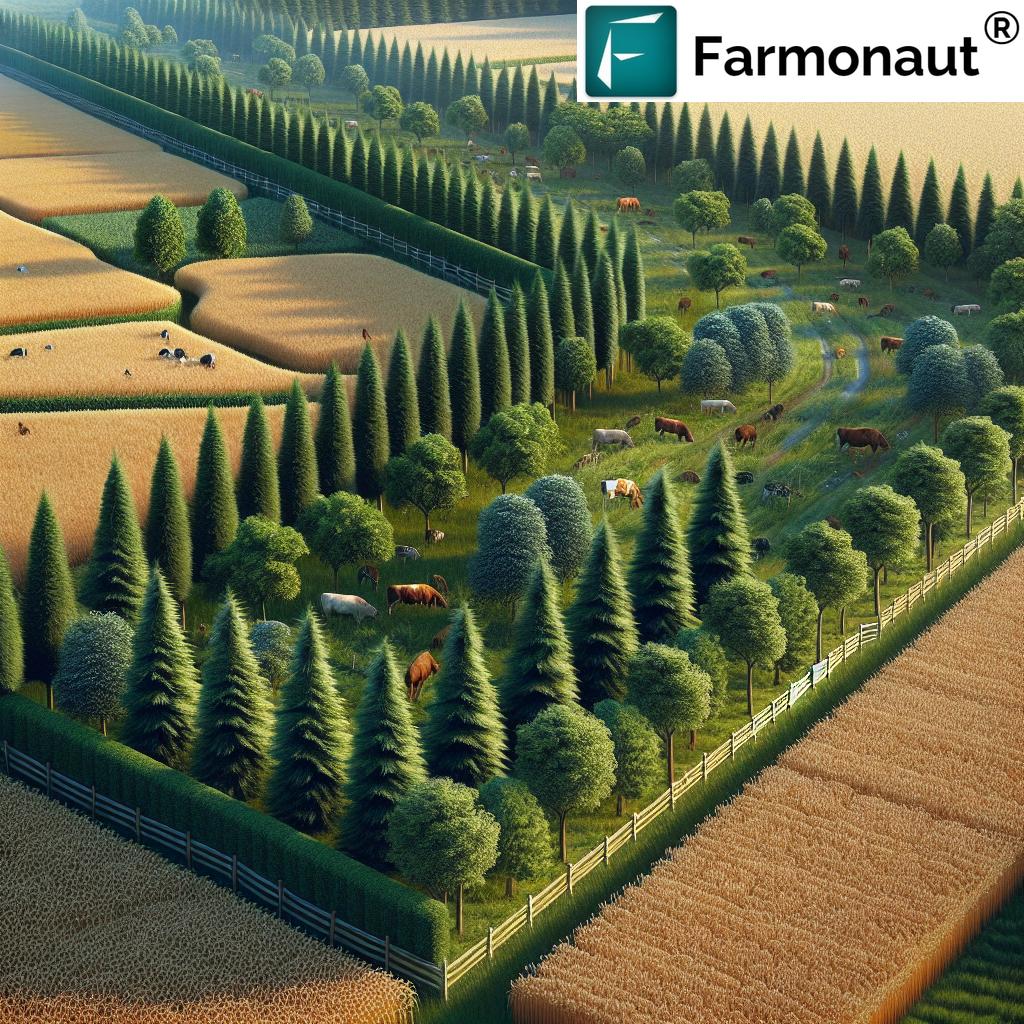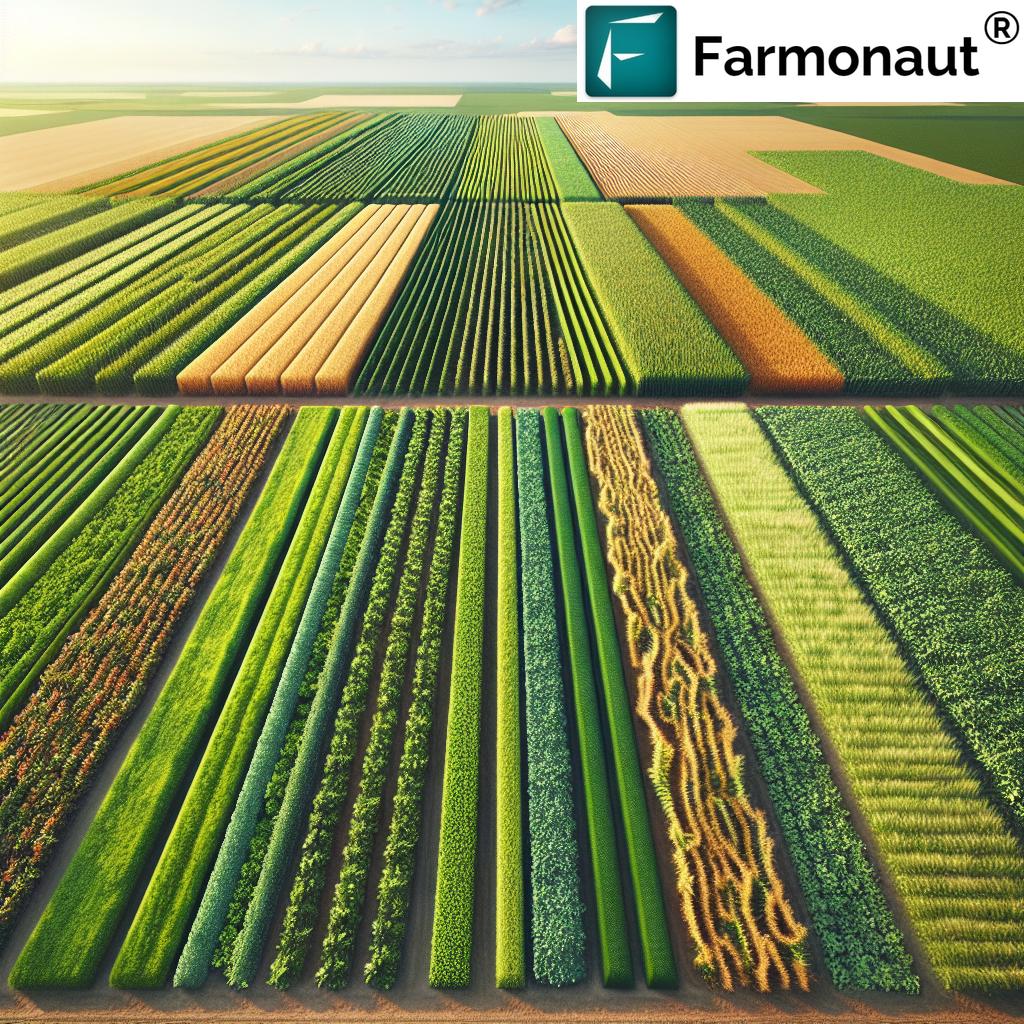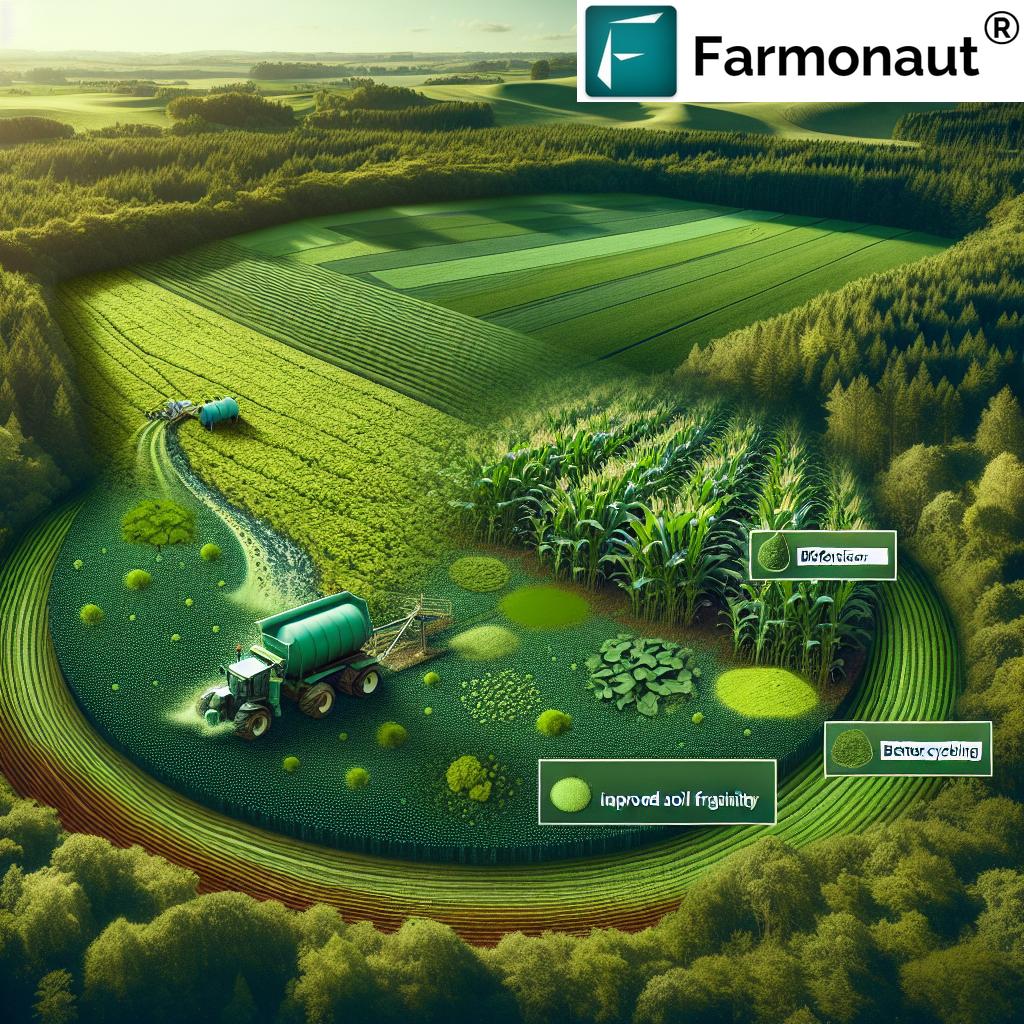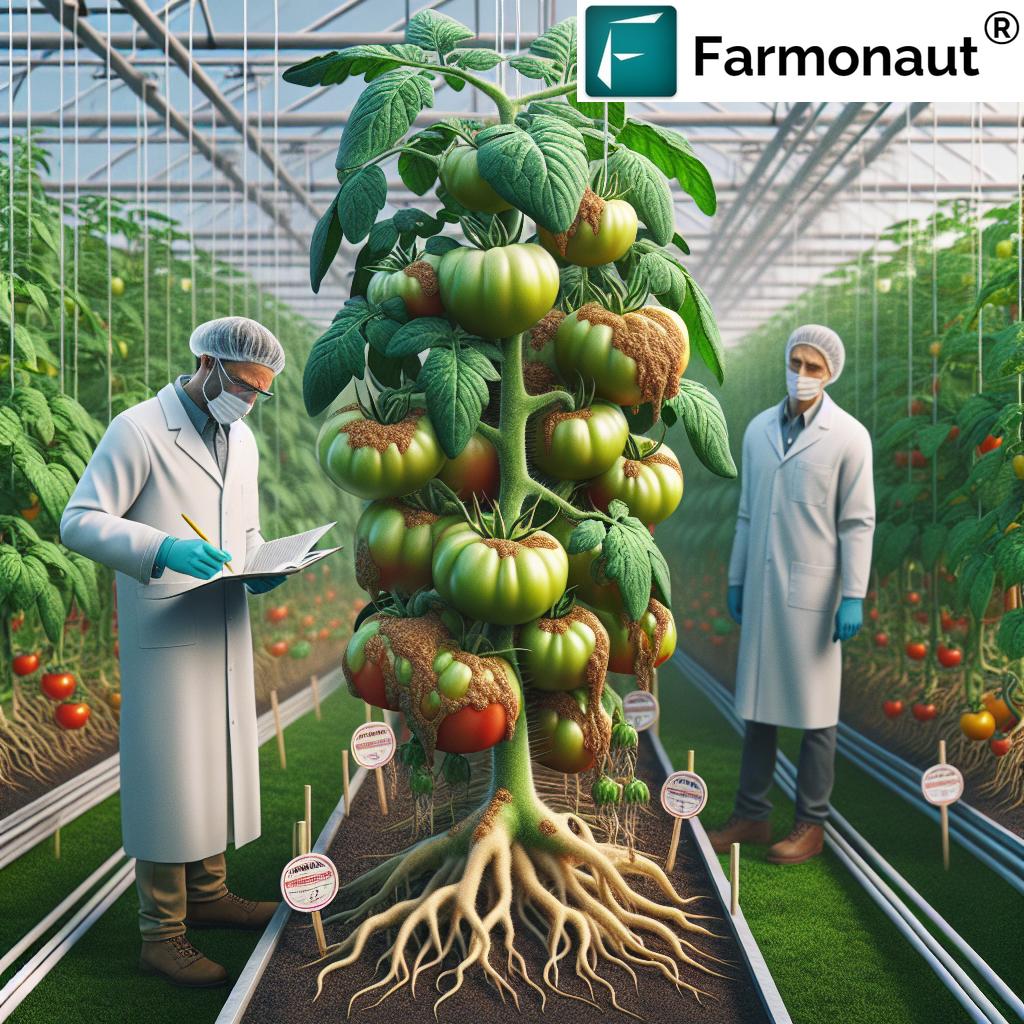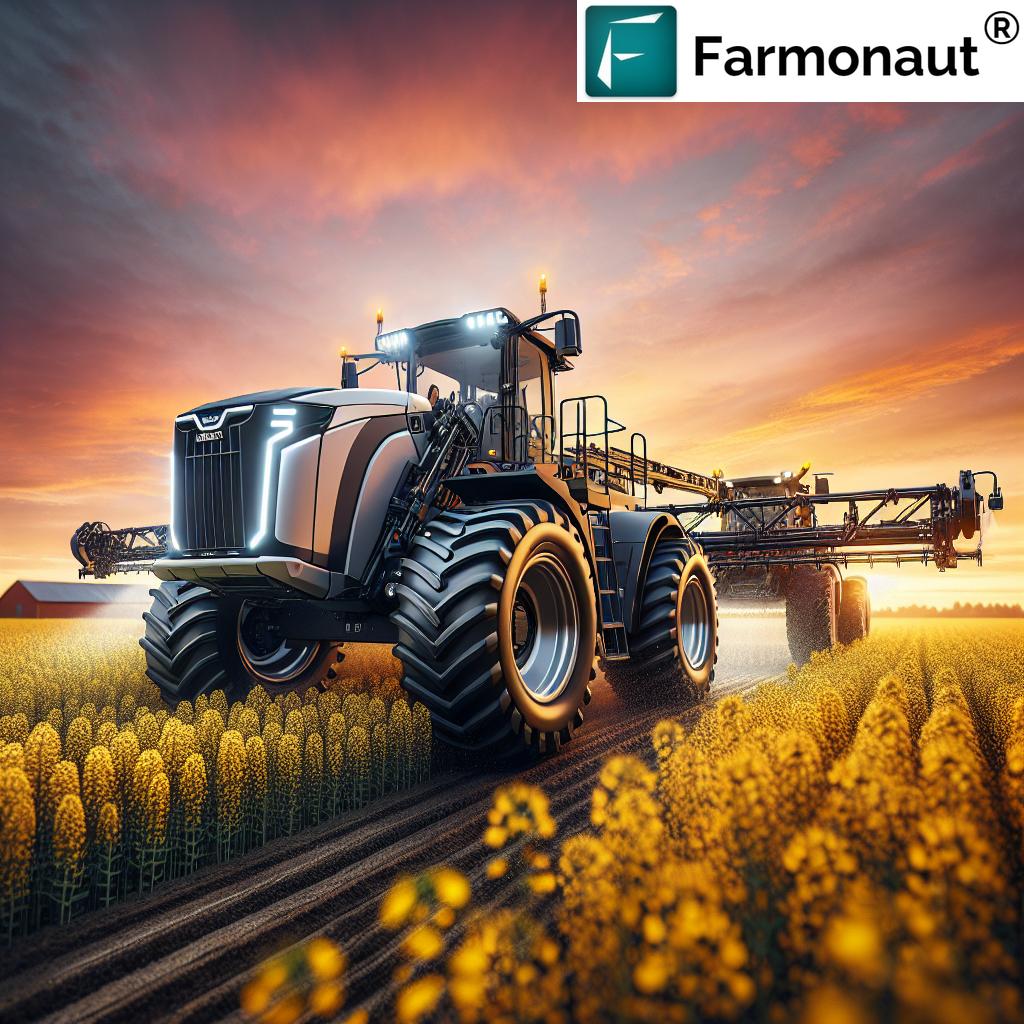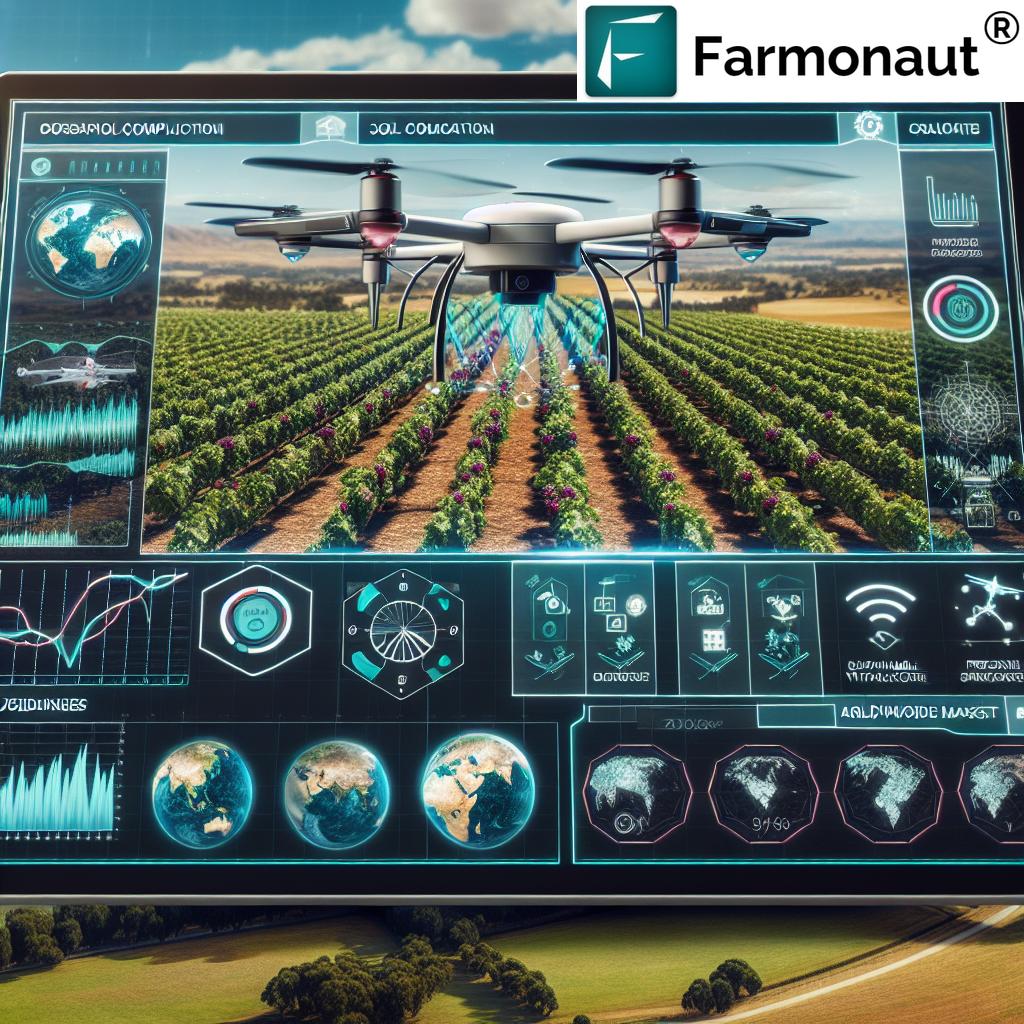Mobile Vertical Farming Systems: Top 7 Innovations 2025
Table of Contents
- Introduction: The Rise of Mobile Vertical Farming in 2025
- What Are Mobile Vertical Farming Systems?
- Relevance to Modern Food Security and Agriculture
- Top 7 Innovations in Mobile Vertical Farming Systems 2025
- Comparative Matrix of the Top 7 Innovations
- Integration with Advanced Technologies
- Economic and Environmental Benefits
- Applications Beyond Traditional Agriculture
- Challenges and the Road Ahead
- How Farmonaut is Empowering Modern Farming Systems
- Frequently Asked Questions (FAQ)
- Conclusion
- Farmonaut Subscriptions
“By 2025, mobile vertical farming systems can increase urban crop yields by up to 300% per square meter.”
Introduction: The Rise of Mobile Vertical Farming in 2025
Mobile vertical farming systems are at the forefront of a technological revolution in agriculture, enabling sustainable vertical agriculture across modern cities and resource-constrained environments. As urbanization intensifies and arable land diminishes globally, we see advanced mobile vertical farming systems emerge as practical, resilient solutions for efficient food production in 2025 and beyond.
In recent years, the concept of vertical farming has revolutionized modern agriculture, combining space-efficient design, resource optimization, and advanced technology. Moving into 2025, mobile vertical farming systems are not only expanding locally but becoming global cornerstones in addressing food security, climate uncertainty, and the reduction of emissions in urban landscapes.
What Are Mobile Vertical Farming Systems?
Mobile vertical farming systems are modular, transportable units specifically designed to grow crops in vertically stacked layers within controlled-environment agriculture (CEA) setups. Utilizing hydroponics, aeroponics, or aquaponics, these systems incorporate LED lighting, automated nutrient delivery, and precise climate control—optimizing plant growth year-round regardless of external weather conditions.
The mobility aspect means these units can be relocated easily—addressing fluctuating food demand, land availability, and adverse environmental conditions. This adaptability makes mobile vertical farming systems especially valuable in both dynamic urban settings and remote rural or disaster-affected areas.
Relevance to Modern Food Security and Agriculture
As the global population continues to expand and arable land per capita diminishes, mobile vertical farming systems are increasingly seen as a viable solution to enhance food security. Their ability to produce high yields on minimal footprints directly addresses land scarcity issues. Deploying these systems close to urban markets reduces transportation costs and emissions, delivering fresher produce to consumers and fostering more sustainable local production.
Furthermore, mobile vertical farming is resilient against climate variability—droughts, floods, and unpredictable weather patterns no longer impact crop yields severely, because these environments are strictly controlled. This stability supports reliable supply chains vital for both local consumption and global food distribution.
Top 7 Innovations in Mobile Vertical Farming Systems 2025
The vertical farming system landscape is evolving rapidly in 2025, with a focus on mobility, efficiency, scalability, and sustainability. Let’s explore the major breakthroughs that are turning vertical farming systems for sale into must-have infrastructure for farming mobile and urban environments alike:
-
1. Modular & Stackable Vertical Agriculture System Units
- Key Feature: Highly modular platforms allow vertical farming units to be easily assembled, disassembled, and expanded—indoors, outdoors, or even on mobile transport.
Benefit: Farmers can tailor the scale of operations from pilot phases to large urban farms, maximizing space utilization and addressing footprint constraints. - Sustainability: Enables rapid adaptation to land or market availability; integrates with renewable energy and local water recirculation systems.
- Key Feature: Highly modular platforms allow vertical farming units to be easily assembled, disassembled, and expanded—indoors, outdoors, or even on mobile transport.
-
2. AI-Powered Environmental & Crop Monitoring
- Key Feature: Sophisticated AI & sensor arrays provide real-time feedback on temperature, humidity, nutrient levels, plant health, and climate conditions.
Benefit: Maximized yields and reduced losses due to stress detection and instant adjustments to nutrient delivery and lighting schedules. - Sustainability: Drastically reduces water use and optimizes energy consumption.
Example Video Embed:
- Key Feature: Sophisticated AI & sensor arrays provide real-time feedback on temperature, humidity, nutrient levels, plant health, and climate conditions.
-
3. Renewable Energy Integration & Off-Grid Operation
- Key Feature: Vertical farming systems integrate with solar panels, battery storage, and energy management technology for off-grid operation—crucial for remote areas and disaster deployment.
Benefit: Economic sustainability with less reliance on traditional energy grids, improved production resilience in diverse environments. - Efficiency: Optimized LED lighting and recirculating climate control further reduce costs and emissions.
Example Video Embed:
- Key Feature: Vertical farming systems integrate with solar panels, battery storage, and energy management technology for off-grid operation—crucial for remote areas and disaster deployment.
-
4. Automated Robotics for Planting & Harvesting
- Key Feature: Autonomous mobile robots manage planting, harvesting, and real-time crop health monitoring, minimizing labor and maximizing efficiency.
Benefit: Farmers can maintain large-scale vertical production with minimal manual intervention and consistent, high-quality yields. - Suitability: Especially relevant for high-cost urban areas and specialized vertical farming applications in defense or disaster zones.
Example Video Embed:
- Key Feature: Autonomous mobile robots manage planting, harvesting, and real-time crop health monitoring, minimizing labor and maximizing efficiency.
-
5. Smart Water Management and Recycling
- Key Feature: Advanced water recirculation systems with micro-filtration and sensors allow up to 90% water savings compared to traditional soil farming.
Benefit: Enables sustainable operation in water-scarce urban and remote environments. - Urban Application: Making it possible to deploy vertical farms in areas previously deemed unsuitable for agriculture.
Example Video Embed:
- Key Feature: Advanced water recirculation systems with micro-filtration and sensors allow up to 90% water savings compared to traditional soil farming.
-
6. Blockchain-Enabled Food & Resource Traceability
- Key Feature: Integration of blockchain throughout the vertical agriculture system supply chain to guarantee the authenticity, safety, and sustainability of produce.
Benefit: Consumers and distributors can instantly verify food origins and handling processes, securing consumer trust and regulatory compliance.Discover how blockchain-based traceability can revolutionize your supply chain transparency: Farmonaut Traceability Solutions
- Key Feature: Integration of blockchain throughout the vertical agriculture system supply chain to guarantee the authenticity, safety, and sustainability of produce.
-
7. Advanced Climate & Nutrient Control Algorithms
- Key Feature: Cutting-edge automation and AI-driven nutrient delivery and climate management tailor every growing environment for different crop species and evolving conditions.
Benefit: Achieves superior yields, consistent quality, and resilience against environmental stresses—maximizing local production in urban and remote settings.
Learn more about resource optimization and advanced management tools for large-scale farms: Farmonaut Large Scale Farm Management
- Key Feature: Cutting-edge automation and AI-driven nutrient delivery and climate management tailor every growing environment for different crop species and evolving conditions.
“Over 70% of new urban farms in 2025 will adopt advanced mobile vertical farming technologies for sustainable food production.”
Comparative Matrix of the Top 7 Innovations
*Direct impact values are not applicable for traceability solutions, as their benefit is primarily food safety, compliance, and market access.
Integration with Advanced Technologies in Mobile Vertical Farming Systems
The future of mobile vertical farming pivots on seamless integration of latest technologies. In 2025, AI-powered monitoring and real-time data analysis ensure that every plant’s growth, climate, and nutrient status is tracked with scientific precision. This information empowers vertical farming mobile units to instantly adjust conditions, maximizing yields and resource use.
Farmers and agribusinesses can connect their vertical farming systems for sale with trusted platforms to:
- Monitor plant health and environmental conditions remotely from web or mobile.
- Harness blockchain-based traceability for produce verification, critical in urban demand and export chains. (See: Farmonaut Traceability).
- Access satellite-based weather forecasts and resource management via API: Farmonaut Satellite API;
Developers: Developer Docs. - Automate resource use, reduce costs, and boost operational visibility with fleet management systems. (Learn more: Farmonaut Fleet Management).
Economic and Environmental Benefits of Mobile Vertical Farming Systems
Economic Perspective:
- Significantly lower labor and inputs costs due to automation and data-driven management
- Yields as much as 300% higher per square meter – directly addressing food scarcity in urban centers
- Reduced reliance on extensive land areas by growing more in less space
- Quick ROI for farmers and entrepreneurs, with demand for local, high-quality produce soaring among conscious consumers
Environmental Perspective:
- Up to 90% less water use with closed-loop hydroponics, compared to traditional farming
- Minimized or zero pesticide use for healthier produce and safer local consumption
- Greatly reduced soil exploitation and risk of soil degradation
- Integration with carbon footprinting, tracking and reducing emissions for improved sustainability (See Farmonaut Carbon Footprinting).
- Supports circular economy approaches by recycling water and integrating with urban nutrient and waste management systems
Applications Beyond Traditional Agriculture
While often associated with modern urban farming, mobile vertical farming systems are demonstrating value in other transformative fields:
- Defense and Remote Military Operations: These systems enable troops to access fresh crops and maintain nutrition in remote, hostile environments, far from traditional food supply chains.
- Disaster Relief & Humanitarian Missions: Mobile vertical agriculture can rapidly restore food production after disasters (e.g. earthquakes, floods), addressing acute food security challenges where soil farming is no longer possible.
- Urban Rooftop and Infill Farming: Pop-up farms on unused rooftops or infill lots unlock local production without impacting existing urban infrastructure.
- Commercial and Educational Uses: Schools, restaurants, and research centers deploy farming mobile systems as teaching tools or to offer hyper-local cuisine.
Challenges and the Road Ahead for Mobile Vertical Farming Systems
Despite their many advantages, mobile vertical farming systems still face some challenges in 2025. These include:
- High initial investment costs – Although modularity and technology reduce lifetime expenditure, capital barriers may limit smaller operators.
- Energy demands – While renewable integration is advancing, consistent power supply for LED lighting and climate management still poses a hurdle in certain areas.
- Technical expertise requirements – Operators must be trained in system management, troubleshooting automation, and ongoing optimization.
- Market perception – Education is often needed to assure consumers regarding the sustainability and nutritional quality of vertically farmed produce.
However, continued advancements in smart systems, AI-driven management, and the steady reduction in equipment costs are expected to accelerate adoption—especially with the support of platforms that enable affordable access and training.
How Farmonaut Empowers Modern Mobile Vertical Farming Systems
At Farmonaut, we are committed to making satellite-driven insights affordable and accessible for all, providing the next step beyond traditional remote monitoring for vertical farming system operators. Our innovative platform combines satellite imagery, AI, and blockchain to deliver precise, actionable data on crop health, soil conditions, environmental impacts, and more—integrating seamlessly with modern farming mobile units.
- Real-Time Satellite & Environmental Data: Our platform delivers timely weather forecasts, vegetation indices (like NDVI), and field management maps, empowering farmers and agribusinesses to proactively manage the effects of climate variability, droughts, and other challenges.
- AI & Blockchain Advisory Systems: Our Jeevn AI system analyzes a comprehensive spectrum of satellite data, providing customized strategies to optimize resource utilization, minimize costs, and increase yield in any environmental conditions.
- Traceability and Sustainability Management: We enable blockchain-based traceability and carbon footprint monitoring, strengthening compliance and transparency—for consumers and regulators alike.
- API and App Accessibility: Our solutions are available via web and app platforms, and through developer APIs, scaling up visibility and strategic farm management at local, city, or national levels.
- Loan and Insurance Support: Our satellite-based verification tools empower financial institutions to offer crop loans and insurance for vertical farms with reduced fraud and risk. Details at Farmonaut Crop Loan & Insurance.
Farmonaut Subscriptions
Unlock a world of satellite-powered insights for your vertical farm, mine, or agricultural venture. Choose your subscription and scale up your intelligence-driven production today:
Frequently Asked Questions (FAQ) on Mobile Vertical Farming Systems in 2025
Q1: What are the main benefits of mobile vertical farming systems over traditional farming?
Mobile vertical farming systems use less land, require less water, allow for production in urban or resource-poor environments, and optimize yields per square meter by leveraging stacked layers and controlled environments. They’re also resilient to unpredictable weather and can be relocated as needed.
Q2: How do AI and automation improve the efficiency of vertical farming systems?
AI-driven monitoring and automation help adjust lighting, nutrient delivery, and climate control in real time—ensuring optimal plant growth, maximizing efficiency, and reducing operating costs, especially in high-demand urban applications.
Q3: Are advanced mobile vertical farming systems environmentally sustainable?
Yes. They often use up to 90% less water, reduce pesticide needs, have smaller carbon footprints (especially when powered by renewables), and enable circular use of resources. Farmonaut’s carbon footprinting tools can track sustainability metrics in real-time.
Q4: Can I integrate satellite technology and farm management into my vertical farming system?
Absolutely. Our satellite-driven insights platform at Farmonaut provides real-time weather, AI-based advisory, fleet, and resource management, accessible via our web/app or API.
Q5: What markets and applications are best suited for mobile vertical farming systems in 2025?
Urban agriculture, food deserts, military and defense, disaster relief, and even specialty commercial environments (like restaurants and research facilities) all benefit greatly from the adaptability, intensity, and efficiency of mobile vertical farming systems.
Conclusion
Mobile vertical farming systems have become a transformative force in agriculture by 2025, combining the best of modularity, advanced technology, sustainability, and adaptability. These innovative vertical agriculture systems are rewriting the rules of local, urban, and even remote food production—addressing core challenges like land scarcity, climate uncertainty, and food security.
By leveraging AI, automation, renewable integration, and the latest data-driven tools, mobile vertical farming systems empower farmers and entrepreneurs to deliver fresher produce, reduce resource use, and respond rapidly to market or environmental changes. Solutions like those we offer at Farmonaut further enhance this vision, making precision insights and sustainability tracking accessible and actionable for every scale of operation.
As urbanization continues and global demands on agriculture rise, mobile vertical farming systems will remain at the heart of efficient, resilient, and responsible food systems—enabling a brighter, greener future for cities and communities everywhere.
Ready to accelerate your vertical farming journey?
Access real-time, satellite-based management for your mobile vertical farming systems now.
Download our app or visit the Farmonaut platform to unlock AI, blockchain, and API-powered growth for your modern farm—anywhere the future leads.








